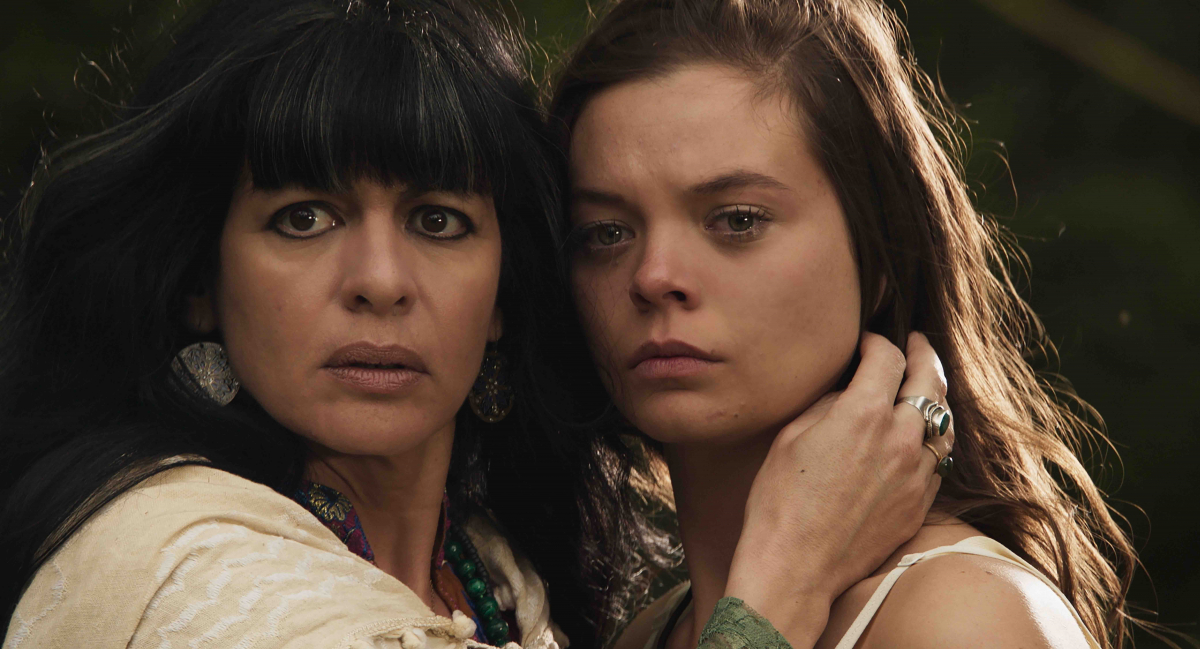
Warning! Humans should tread carefully into the oft inflammatory cinema of Bruce LaBruce. Very carefully. However, if you like your coffee black, your politics darker, and your director Canadian, he might just be your cup of java.
To quote myself, a task leaving me more time for the treadmill: "Mr. LaBruce, for the uninitiated, is a man . . . and a highly subversive one at that with a cult following. Yes, for over two decades, this queer underground filmmaker has shocked and entertained with his tongue-in-cheek-and-elsewhere oeuvre."
His Hustler White (1996) "stars an ex-beau of Madonna's in an ode to L.A. male prostitution that includes a white, very blond boytoy being consensually gangbanged by a very long line of African American hunks. Think of Trader Joe's on Sunday afternoon. Gerontophilia (2013) focuses on a young gent discovering he has the hots for the male geriatric clientele of a nursing home. Then Otto; or, Up with Dead People (2008) chronicles with a gory finesse the plight of a carnivorous, neo-Goth gay zombie."
And please don't forget The Misandrists (2018), an unrestrained tale about a cloistered group of man-haters that includes such telling lines as: "We must tell the world to wake up and smell the estrogen" and "Remember, girls, the closest way to a man's heart is through his chest." Dust off that hacksaw.
While I am at it -- and while you’re not here to restrain me -- LaBruce, who received a career retrospective at no less than Museum of Modern Art in 2015, penned the following exchange between two besotted radicals for his ode to anarchism, The Raspberry Reich (2004):
"Heterosexuality is the opiate of the masses."
"I thought opiates were the opiate of the masses."
So much for Marxism.
Politics, however, are pretty much pushed aside in LaBruce’s latest act of celluloid subversion, Saint-Narcisse (SN). Here, instead, the nuclear family, societal narcissism, and religious leaders are pummeled into a tasty brew of nervy eroticism, campy theatrics, and demented mythology.
LaBruce's mise-en-scène is straight out of the Hammer Production/Peter-Cushing films of the '70s (e.g. To the Devil . . . A Daughter). This makes sense especially because the action here takes place in the '70s, and yes, there is cigarette smoking.
The film opens with a full-screen closeup of a black-denimed crotch belonging to a leather-jacketed young gent manspreading at an all-night Montreal laundromat. Seated in front of a dryer, Dominic (the desirable Félix-Antoine Duval) is watching his grandmother's brassiere and other goodies get tumbled-dried. Seated next to our hero is an attractive blonde in a miniskirt. Before you can spell "Downy," the two are madly copulating to the tune "Where Evil Grows" by The Poppy Family. Is this a foreshadowing? Of course.
Soon a crowd gathers on the street outside to watch the carnal carryings-on inside. Dominic sees them but, being a fledging exhibitionist, he doesn’t care until he sees a monk in full getup staring at him, a monk who just might have his face.
Oh, no! Is this a fantasy? As you decide, the opening credits roll by, making what you’ve just witnessed a sort of cinematic foreplay.
Meandering home, Dominic repeatedly takes Polaroids of himself and hands them out to strangers. One is gifted to a rather aggressive, semi-blind female streetwalker. (If you know the Narcissus legend, think Tiresias.) This low-rent sex worker suddenly grabs the lad and prophesizes: "If you want to live a long life, handsome, never try to know yourself."
Then it's back home for quick chat with grandma.
Grandma: When are you going to get married? You need a family.
Dominic: You are my family.
Well, that's true just for a few minutes. Because after Dominic photographs himself masturbating in front of the bathroom mirror, she expires rather quickly.
The distraught grandson doesn't have long to mourn because as he’s going through the papers his beloved relative has left behind, he discovers the letters from the mother he thought was dead. Yes, the mother he never met post-birth has been writing letters to him all along. She's alive!
Quickly, Dominic rides away on a motorcycle in search his parent, who lives in the woods and is said to be a witch by the locals, but she just might only be a lesbian. The two eventually have a reunion and hug while our hero is butt naked, which makes sense because the last time he saw Mom, he was buck naked, too, although with his umbilical cord still attached.
Meanwhile, not far away from this get-together is a monastery run by a pederastic priest (Andreas Apergis) with a Saint-Sebastian fetish who has the hots for Dominic’s lookalike monk. Remember him? But is this young man Dominic or his twin or an unrelated doppelgänger? And when a young gal living with Mom tells Dominic to go "F" himself, are there complex implications to that rather common colloquialism that we have to reconsider? Can Dominic actually F himself . . . or is he copulating with a twin?
With superb period production design by Alex Hercule Desjardins complimented by Valérie Gagnon-Hamel's equally astute costuming, and accompanied by Christophe Lamarche-Ledoux's sinister musical notes, Saint-Narcisse is never less than a hoot and a half. Erotic, mirthful, ambisexual, and rather clever in its use of the past to expose the modern penchant for self-absorption and religious hypocrisy, LaBruce has out-LaBruced himself once again.
(Film Movement premiered Bruce LaBruce's Saint-Narcisse at New York City's Quad Cinema this past month as well as via virtual cinema.)
